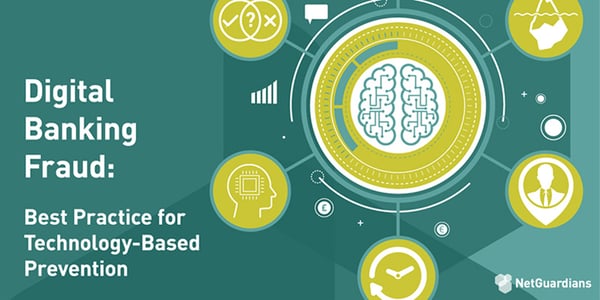Asian and European digital payments markets might appear quite different, but their problems are the same – fraudsters stealing billions. NetGuardians’ state-of-the-art technology can assess risk in real time, block suspicious transactions and help educate customers, writes Sandy Lavorel
In many countries across Asia, you can go for weeks if not months without touching cash. While this might also be possible in Scandinavia, in central Europe you’d be lucky to last a couple of days. The social acceptance, lack of infrastructure and the minimum charges when paying with debit cards across much of Europe make carrying cash a requirement at all times – even if it’s only for chewing gum.
Digital banking on two continents
Figures from Statista show the magnitude of difference. In Asia, digital payments will be worth €2,235 billion this year, and over the next three years that value is expected to jump 15.2 percent a year to €3,418 billion. In Europe, digital payments are expected to reach €711 billion this year and grow by 7.6 percent a year to €884.9 billion by 2023.
There are many reasons for this huge variation. Most people across Asia use their phones and e-wallets to pay for things, with e-commerce in the region estimated to total €1,505 billion in 2020. Europe, on the other hand, boasts fewer digital banks, and those that do exist are not as user-friendly as their Asian counterparts. As a result, e-commerce in Europe this year will total an estimated €668 billion.
Myles Bertrand, managing director APAC at Mambu Asia Pacific, explains why there is such wide acceptance in Asia. “Digital banking across the Asia Pacific region has seen a huge surge of growth over the past 12 months, with many more transformative changes on the horizon in 2020. Countries like Hong Kong, Singapore, Indonesia, Thailand and Malaysia already have a thriving digital banking industry thanks to early offerings from traditional banks, and regulatory change is on the way in many markets.”
Indeed, regulators in the two regions approach the market very differently. In Asia, regulators in leading countries such as Hong Kong, Malaysia and Singapore encourage digital banking believing it will spur innovations that will benefit the customer. They have offered organizations wanting to set up a digital bank specific licences that have lower liquidity requirements, making it easier for new players to enter the market.
The contrast with Europe is stark. Regulators there offered a one-size-fits-all banking license, so the rules were the same for traditional banks such as Santander and Nordea as they were for challengers including N26 or Starling. Europeans have also proven to be more conservative when it comes to embracing digital payments – just look at the e-commerce spend. But that is changing. For instance, FINMA, the independent supervisor of the Swiss financial market, points out that the national parliament introduced the new fintech license, with relaxed requirements, to boost innovative financial companies.
Typical types of banking fraud
Despite the differences, both regions face similar problems when it comes to fraud. Digital payments are settled fast – some almost in real time. This leaves banks a very small window of opportunity to assess the risk of a transaction and block fraudulent payments. Any fraud-mitigation effort often has to cope with many thousands of transactions within a very short space of time. And even though Europe has fewer digital transactions than Asia, there are fewer players – so banks can still experience massive volumes, similar to those in Asia.
The types of fraud are similar, too, although some are more prevalent in one region than another. For example, SIM swaps, where a fraudster gains access to the customer’s phone to steal information or take over the account, is less common in Europe than in Asia and Africa.
Europe, on the other hand, sees more scams where the fraudster sends either an SMS or an email containing a link. As soon as the customer clicks on it, malware is installed that will enable the fraudster to take over the session when the customer logs in.
Social engineering (phishing), where the criminals get customers to give them information that will help them hack into their accounts, is widely seen across the world. And all these frauds are increasingly difficult to spot as the criminals get wise to efforts made to thwart them.
The most effective solution
Top fraud-mitigation solutions must address all this and more. To cope with the huge volumes, NetGuardians sorts instant digital transactions from slower ones and dedicates significant computing power to assessing their risk in real time. It compares each transaction against a 360-degree profile of the customer, looking for anything anomalous – the device, location, time of transaction, language, destination, purchase, amount – raising an alert when necessary. Alerts that are overridden are added to the profile, so the software can learn over time, reducing the risk of false alerts.
In the cases where the customer hands over their password and therefore access to their bank account, NetGuardians’ software will still recognise that the device or language being used is not the bank customer’s usual one. In this way, not only does the NetGuardians solution block more suspicious transactions, it also raises fewer false alerts compared with traditional rules-based fraud-mitigation processes and systems.
The right fintech partner
It is this level of protection and sophistication that even the big banking software companies are urging banks to adopt. Mambu’s Bertrand is one when he says: “It is crucial that banks and fintechs looking to become reputable players in the digital banking landscape ensure that all of their new technologies, products and services offer the highest level of safety and security to their customers, and minimize the risk of fraud.”
The days of banks relying on rules alone to protect their customers from fraud are long gone. Nowadays, digital payments are concluded so swiftly that real-time mitigation is the only solution. So, whether you’re in Singapore or Switzerland, spotting and stopping fraudulent digital payments can only be achieved with state-of-the-art technology. Anything less means leaving the door open to the criminals and putting your customers’ cash at risk.
Learn more:



